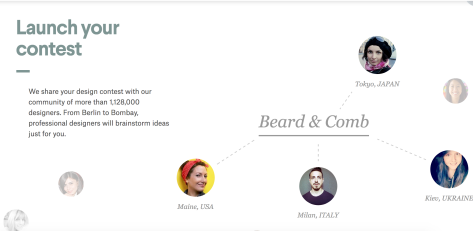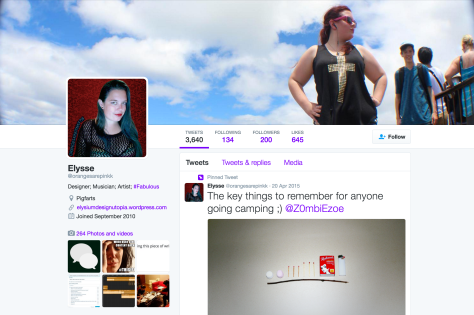As per usual with this subject, I’ve swapped topics from my original Utopia vs Dystopia in video games.
A lot of people have been giving presentations on branding, and why your online persona is so important, and my mind immediately jumped to ‘Then why does no one want to pay for personal branding if it’s so important.’
Let me give you a bit of background into what exactly I’m talking about. Graphic Design is this sort of non-job in the online market, despite design and aesthetic being such a prominent feature of marketing and companies in the present day. And yet, if you’re not a designer you’re probably not aware of how much of a struggle simply getting paid for the work you do is. Half the people asking for work to be done aren’t expecting to have to pay for this work, because there’s this really old and outdated stigma that “it’s just design”, which is infuriating in it’s own right.
Thanks to this desire for absolutely no one to pay for work they want done online, there’s been a rise in the commonality of the ‘design competition’ form of website. A brief summary of these websites are a marketplace, in which someone asks for a design, and multiple designers throw designs at them in the chance that they might get chosen and paid for their work, but in the process usually lose most of their rights to their work even if their design is not the ‘winner’ that the client picks and pays for.
It’s this sort of unhealthy competition that becomes detrimental to the design industry, because we start to sell ourselves short in the hope of receiving any sort of a paycheck. Websites like fiverr.com have people advertising their services for logo design, within 24 hours, for as little as $7. That’s a wage of less than 50c an hour.
Examples of competitive marketplace websites:
https://99designs.com.au/how-it-works (pictured above)
https://www.designcrowd.com.au/
The issue is that for a entrepreneur designer just starting out, with minimal contacts, your job pool is so minute that this sort of thing may be the most pay you can actually find. Similarly, the only way I built my existing contact list is by offering some smaller services for free at first, and through other friends who have existing contacts with e-sports and journalism businesses themselves, and pass along work if they see any. A good network is essential, if you don’t know people as a freelancer, it’s likely you won’t find work.
When looking for jobs outside of the online marketplace as a designer, however, you need to be able to present yourself immediately as a professional. What’s the easiest way to do that? With a personal brand of your own, in the hopes that they will see it, like it, and think ‘They could do something that looks this good for me.’ Personal branding is what you want a client or prospective employer to see before they even get to your CV/Resume. In some ways, it’s the first impression that determines how they view your application.
So while I want to focus on these issues, and why and how they’re a problem to designers, I also want to help myself for the future, so for my final project I’m going to give myself a personal brand. Unlike a few other people however, I’m focusing on the design aspect, not so much an online persona, but an actual physical personal brand that I can use for the future, while also giving those unfamiliar with the design industry an idea of what the field is like.
The final submission will either come in the form of a research report, with visual evidence, or some sort of a digital artefact, although I’d love to hear some feedback, suggestions or questions about this subject, even anything you think I should consider while doing this!





